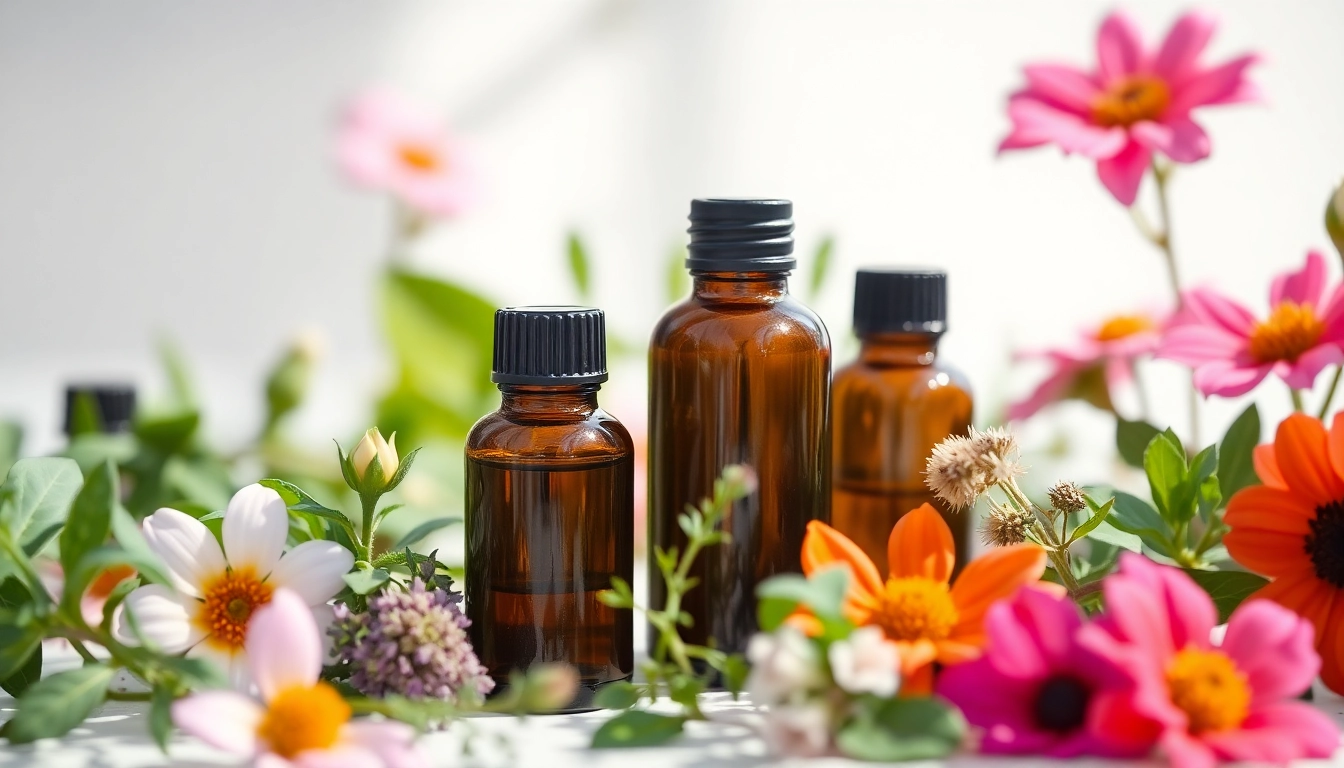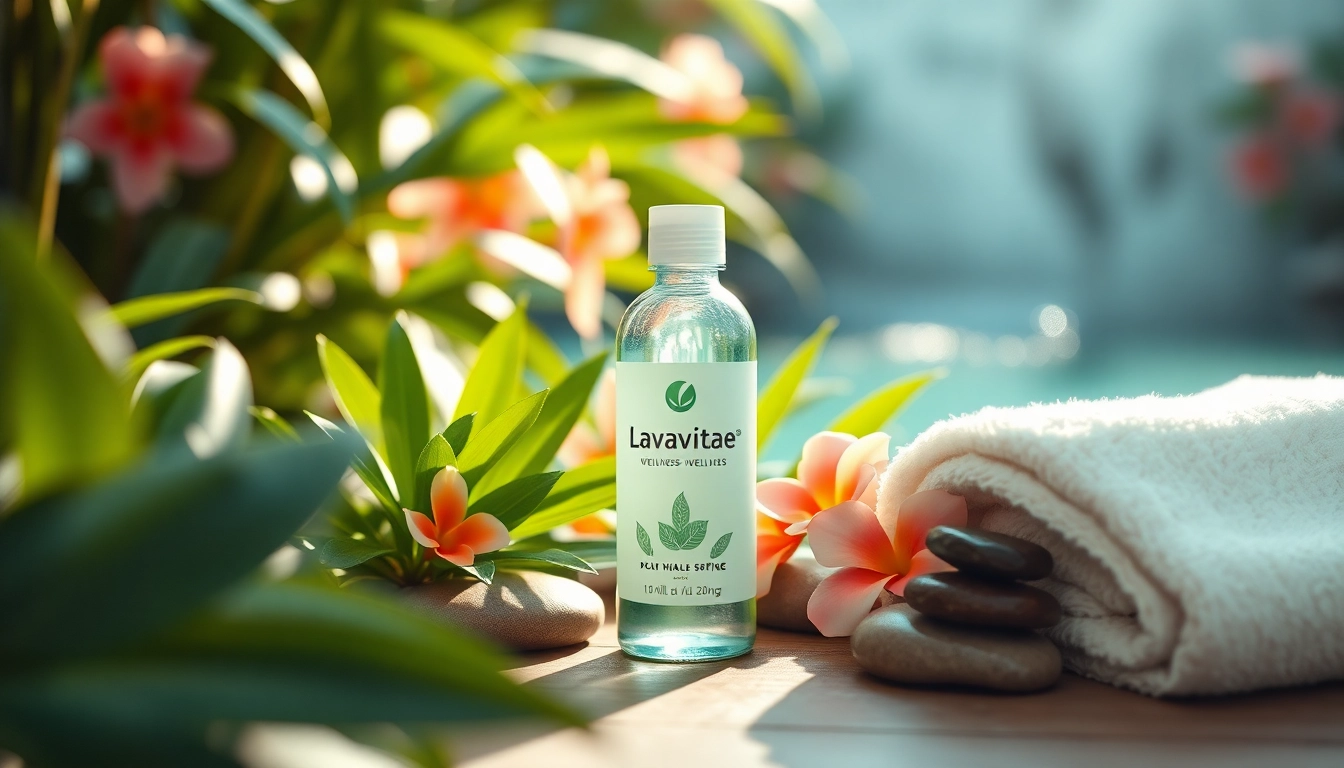Understanding Essential Oils
What Are Essential Oils?
Essential oils are highly concentrated plant extracts that capture the natural fragrance and therapeutic properties of the botanical source. Often extracted through methods like steam distillation or cold pressing, these oils are used for a variety of applications, including aromatherapy, skincare, and natural remedies. They contain volatile compounds responsible for their distinct scent and numerous health benefits, making essential oils a popular choice for those seeking natural approaches to wellness. Importantly, knowledge of essential oils is crucial, as improper usage can lead to adverse effects. For more information on essential oils, refer to our Essential oil resource.
The History of Essential Oils in Healing
Essential oils have been utilized for thousands of years, dating back to ancient civilizations. The Egyptians were among the first to incorporate essential oils into their practices, using them in religious rites, embalming, and cosmetics. Archaeological evidence has shown that they not only appreciated the fragrant qualities of oils like myrrh and frankincense but recognized their healing properties as well.
In the Mediterranean region, essential oils were employed by the Greeks and Romans for their potentially beneficial effects on health, while in India, the Ayurvedic tradition utilized them to balance the body and mind. Fast forward to the 20th century, during World War I, essential oils were recognized for their antiseptic properties, marking their resurgence in modern holistic health practices.
Today, essential oils play an integral role in alternative medicine, with growing scientific support for various therapeutic claims, making them relevant in contemporary health and wellness discussions.
How Essential Oils Are Made
The extraction process of essential oils is vital in preserving their therapeutic properties. There are several methods used, but the most common are steam distillation, cold pressing, and solvent extraction.
- Steam Distillation: This method involves passing steam through plant materials, which vaporizes the oil. The steam is then cooled, causing the oil to separate from water, resulting in pure essential oil.
- Cold Pressing: Often used for citrus oils, this method involves mechanically pressing the peels of the fruit to release oil. It retains the fresh scent and flavor without applying heat.
- Solvent Extraction: This technique uses solvents to extract oils from plant material. Although it can yield a higher quantity of oil, some argue that it may impact the oil’s purity and therapeutic efficacy.
Regardless of the extraction method, ensuring the quality of the starting plant material is crucial, as it directly affects the oil’s quality and potency.
Essential Oil Uses and Applications
Top Uses for Essential Oils in Daily Life
Essential oils offer a multitude of uses in daily life, making them versatile ingredients for health, beauty, and home care. Here are some of the most common applications:
- Aromatherapy: Essential oils are most widely recognized for their use in aromatherapy, promoting relaxation, stress relief, and emotional balance. Common oils include lavender for sleep support and citrus oils for mood enhancement.
- Skincare: Many essential oils possess antimicrobial and anti-inflammatory properties, making them useful in skincare products to treat acne, soothe irritation, and improve skin texture. Oils such as tea tree and frankincense are popular choices.
- Home Fragrance: Essential oils can replace synthetic air fresheners, providing a natural, pleasant aroma to the environment. They can be added to diffusers, candles, or homemade potpourri.
- Household Cleaning: Oils like lemon and eucalyptus contain properties that can help combat germs, making them excellent choices for natural cleaning solutions.
Essential Oils for Aromatherapy
Aromatherapy utilizes essential oils for therapeutic benefits through inhalation or topical application. This practice is centered on the idea that scents have a profound impact on our emotions and overall health. The oils can be diffused in the air or added to a bath for a relaxing experience.
Notable essential oils for aromatherapy include:
- Lavender: Known for its calming and relaxing properties, lavender oil is commonly used to combat insomnia and reduce anxiety.
- Peppermint: This invigorating oil is often used to enhance focus and energy levels, making it ideal for studying or working.
- Eucalyptus: It is especially beneficial for respiratory health, helping to clear congestion and ease breathing issues.
For effective aromatherapy, consider blending oils to create synergetic effects; for example, combining lavender and bergamot can enhance feelings of relaxation while promoting an uplifting mood.
Using Essential Oils in DIY Products
The DIY movement has embraced essential oils as key ingredients for creating natural products at home. From skincare to home cleaning supplies, utilizing essential oils allows for customization and avoidance of synthetic chemicals. Here are a few popular DIY applications:
- Essential Oil Roller Blends: Mix essential oils with a carrier oil in a rollerball bottle for easy, on-the-go use. Popular blends include a stress-relief blend (lavender, ylang-ylang) or an energy blend (peppermint, citrus).
- Homemade Cleaners: Combine vinegar, water, and essential oils like tea tree and lemon to create effective all-purpose cleaners. This not only disinfects but also leaves a refreshing scent.
- Natural Perfumes: Experiment with blending different essential oils to create a personalized fragrance. Base notes like sandalwood, middle notes like geranium, and top notes like bergamot can create a well-balanced scent.
The possibilities are endless, and making these products at home ensures control over the ingredients and their quality.
Benefits of Different Essential Oils
Lavender Essential Oil and Its Soothing Effects
Lavender essential oil is one of the most popular and widely used essential oils due to its calming effects. Used traditionally for promoting relaxation and restful sleep, lavender oil has been shown to reduce anxiety, improve mood, and even alleviate mild pain.
Scientific studies suggest that inhalation of lavender oil can lead to reduced stress levels and improved quality of sleep. Additionally, it has healing properties, making it beneficial in skincare for treating burns and bug bites. Its versatility extends to various forms of applications, including bath oils, massage oils, and creams.
Peppermint Essential Oil for Focus and Energy
Peppermint essential oil is renowned for its invigorating aroma that promotes clarity and energy. It is often used in workspaces to enhance concentration and reduce mental fatigue. A study from the journal of Neuropsychology suggests that simply smelling peppermint oil can significantly increase alertness and performance.
Moreover, peppermint oil can be used to alleviate headaches when applied topically, often reducing tension. Its cooling effects also make it an excellent companion for pre-workout routines, helping to invigorate and energize the body.
Tea Tree Essential Oil: A Natural Antiseptic
Tea tree essential oil holds a significant reputation for its antimicrobial properties. Used for centuries by indigenous Australians for healing wounds, it is now a staple in modern skincare. Studies indicate that tea tree oil can reduce inflammation, aid in the treatment of acne, and serve as an effective disinfectant.
Furthermore, its antifungal and antibacterial properties make it a favored ingredient in natural cleaning solutions and personal care products, including shampoos and lotions. However, care should be taken, as tea tree oil should not be ingested and should be diluted before applying to the skin.
Best Practices for Using Essential Oils Safely
Essential Oil Dilution Guidelines
One of the key components of safe essential oil usage is proper dilution. Essential oils are extremely concentrated and should never be used undiluted on the skin. The general guideline is to dilute essential oils in a carrier oil such as coconut, almond, or jojoba oil. This can greatly reduce the risk of skin irritation and adverse reactions.
For topical application, a typical dilution is around 2-5% based on the total amount of carrier oil used. For instance, if you are using 30 ml of carrier oil, you can add 12-15 drops of essential oil for a safe and effective blend.
Patch Testing Essential Oils
Before using any new essential oil, especially on sensitive skin, it’s wise to conduct a patch test. This involves applying a small mix of the diluted essential oil on a discrete skin area, such as the inside of the forearm, and monitoring it for any adverse reaction over 24 hours. If there is no irritation, redness, or itchiness, it is typically safe to use the oil on larger skin areas.
When to Avoid Certain Essential Oils
While essential oils provide various health benefits, some individuals should exercise caution when using them. Pregnant or nursing women, infants and young children, and individuals with breathing disorders, like asthma, should consult a healthcare provider before using essential oils. Certain oils can interact with medications or may not be suitable for those with specific health conditions.
Moreover, some essential oils are phototoxic, meaning they can cause skin reactions when exposed to sunlight. Citrus oils, for instance, should be used with caution during the day. Ensure to read up specific guidelines and consult with a healthcare professional when in doubt.
Choosing Quality Essential Oils
Identifying Pure Essential Oils
With the rise in popularity of essential oils, the market has also seen an influx of low-quality products. Identifying 100% pure essential oils is essential to ensure you are getting the therapeutic benefits associated with them. Here are some tips for selecting quality oils:
- Look for oils marked as “100% Pure Essential Oil” without additives.
- Check for the Latin name of the plant on the label to ensure accuracy.
- Reputable brands will often have third-party testing to confirm purity.
Reading Labels and Certifications
Understanding essential oil labels is crucial for making informed purchases. Look for certifications such as USDA organic or other quality assurance marks, which can indicate higher standards of production. Additionally, some brands offer GC/MS (Gas Chromatography-Mass Spectrometry) test results that detail the composition and purity of the oil.
Top Recommended Brands for Essential Oils
Choosing reputable brands can make a significant difference in the quality of essential oils you purchase. Some well-known brands that consistently receive positive feedback include DoTerra, Young Living, and Plant Therapy. These companies have established rigorous testing and quality control measures to ensure the integrity and safety of their oils.



